Once an exhausting and tedious task yard maintenance is now made much easier with the help of leaf blowers.
Cordless and corded leaf blowers are modern options that reduce noise and fuel waste with features that are good for the environment and save energy.
Start with a corded model for beginners so you can enjoy steady power without worrying about charging. Experienced users may choose electric tools because they are easier to move around and more convenient for large duties.
A corded device is a good choice for beginners because it provides constant power and eliminates the need to worry about charging.
There are many great choices out there, making it easy to find one that works for you. Take a look at what is available to you and keep your yard clean all year with no effort.
Understanding Modern Best Leaf Blowers
Some individuals hold the belief that leaf blowers emit excessive noise, harm the environment and contribute to fuel wastage.
However, the newer corded and cordless models are powerful enough to get the job done without these drawbacks. If you’re in the market for a leaf blowers, starting with a corded option is a good idea.
Modern leaf blowers, corded or cordless, offer power minus the noise and pollution associated with traditional models.
Our research and testing in the New Hampshire woods since 2014 have consistently shown it to be the top performer for garden maintenance.
Our Top Recommendations for Leaf Blowers
Modern leaf blowers are powerful yet eco-friendly, countering noise and pollution associated with traditional models. Hence, starting with a corded option like the Toro PowerJet F700 is wise for leaf blowers seekers.
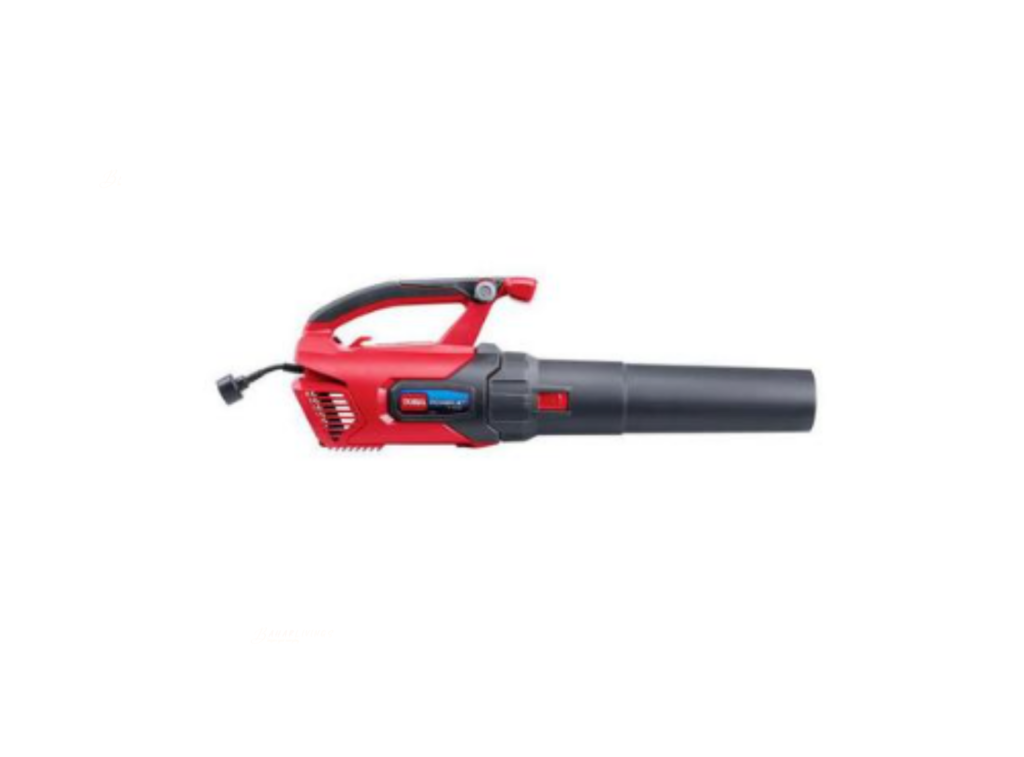
The best leaf blowers
The Toro PowerJet F700 works like a powerful air blower, easily lifting and moving dense, damp or matted leaves.
Its simple one-handed interface and curved handle make it easy to use and control.
Additionally, it features a second pommel grip for added stability when handling its strong airflow.
Keep property size in mind as corded models require an outlet, limiting range to around 100 feet.
If you need to purchase an outdoor extension cord, it will add to your overall budget.
An excellent corded alternate
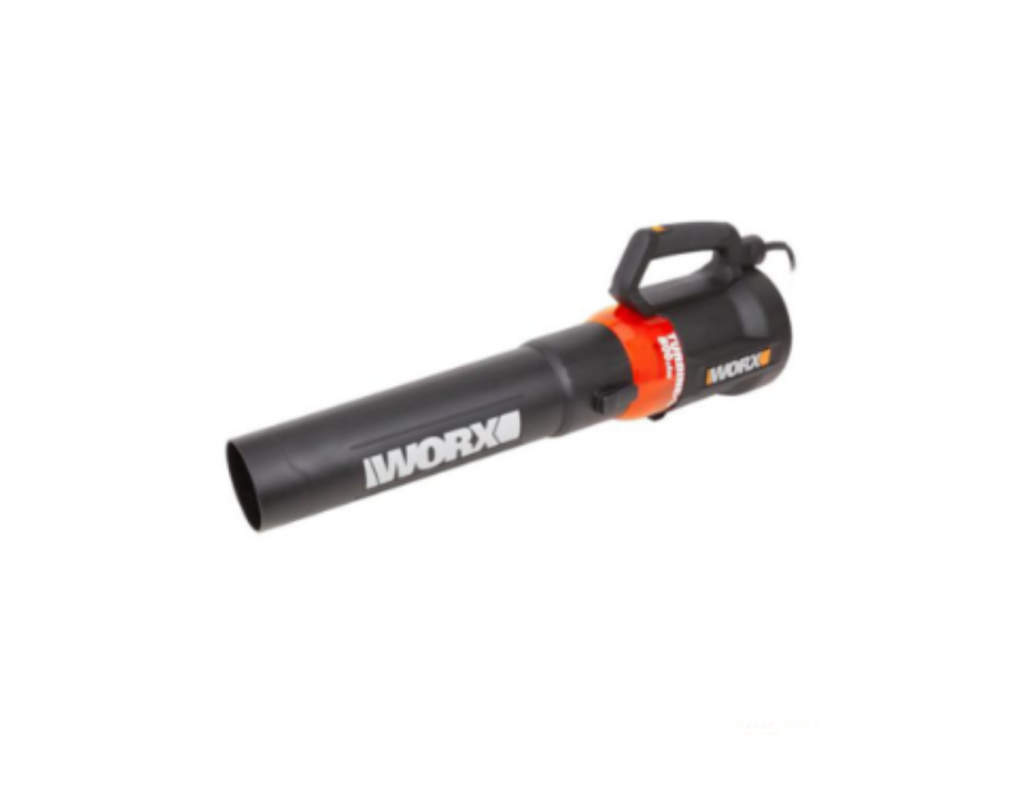
An excellent corded alternate
If the Toro F700 is unavailable, we suggest the Worx WG521 Turbine 800 Leaf Blower, which is the most powerful option we’ve tested.
This blower is excellent at moving If the Toro F700 is not available, we recommend the Worx WG521 Turbine 800 Leaf Blowers, the most powerful option we’ve tested.
However, it has less comfortable comfort and usability compared to the Toro but is excellent at moving leaves.
Leaves but has less comfortable comfort and usability compared to the Toro. The Worx has a smaller handle and lacks the front pommel grip found on the Toro, which adds comfort and control.
For fast leaf clearing, it is ideal, but note it may strain forearms due to limited handle options.
The most powerful cordless blower
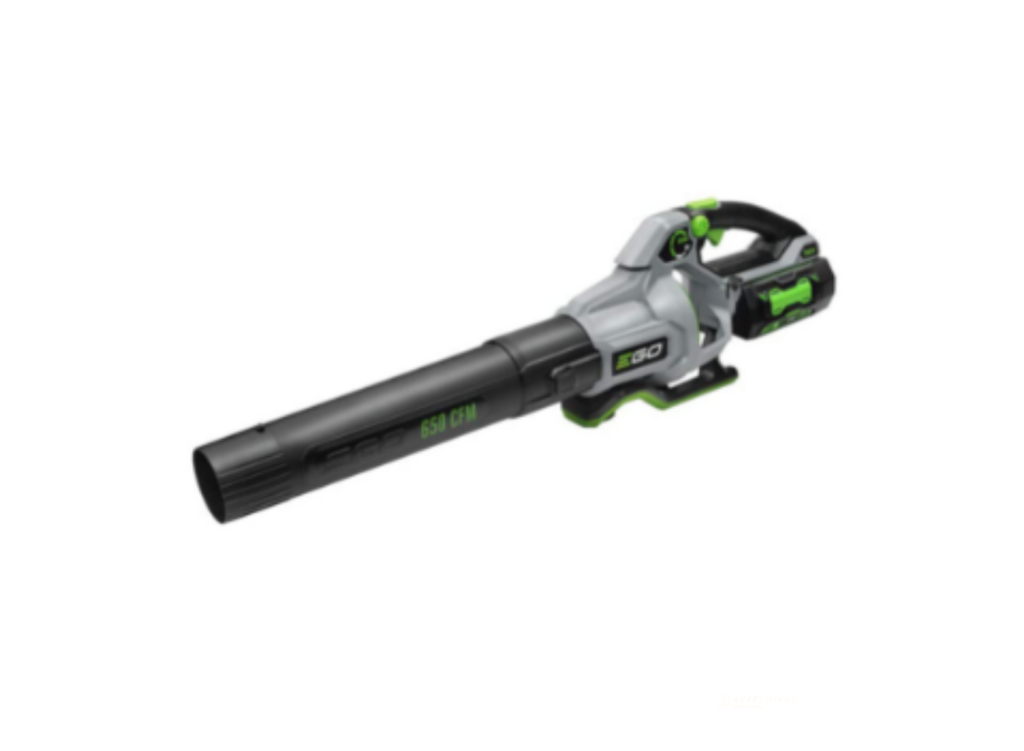
The most powerful cordless blower
If you must extend beyond the cord’s reach, try the cordless Ego LB6504 Power+ 650 CFM Blower.
This tool provides around 27 minutes of runtime, which is one of the longest we’ve tested.
If you need to reach further than an extension cord allows, consider using the cordless battery-powered Ego LB6504 Power+ 650 CFM Blower, which offers about 27 minutes of runtime, one of the longest we’ve tested cord, consider the cordless battery-powered Ego LB6504 Power+ 650 CFM Blower.
It offers approximately 27 minutes of runtime, one of the best we’ve tested. Although it may not have the same raw power as corded models, the Ego LB5604’s focused airstream is effective at lifting wet leaves. Its turbo button provides an extra burst of power but drains the battery faster.
While it is heavier and pricier, weighing around 10 pounds and costing just under $300, it offers the best combination of power, portability and ease of use.
Despite this, it offers the best combination of power, portability and ease of use. Plus, if you plan to expand your collection of Ego lawn tools, it is a smart investment.
Not as powerful, a little quieter
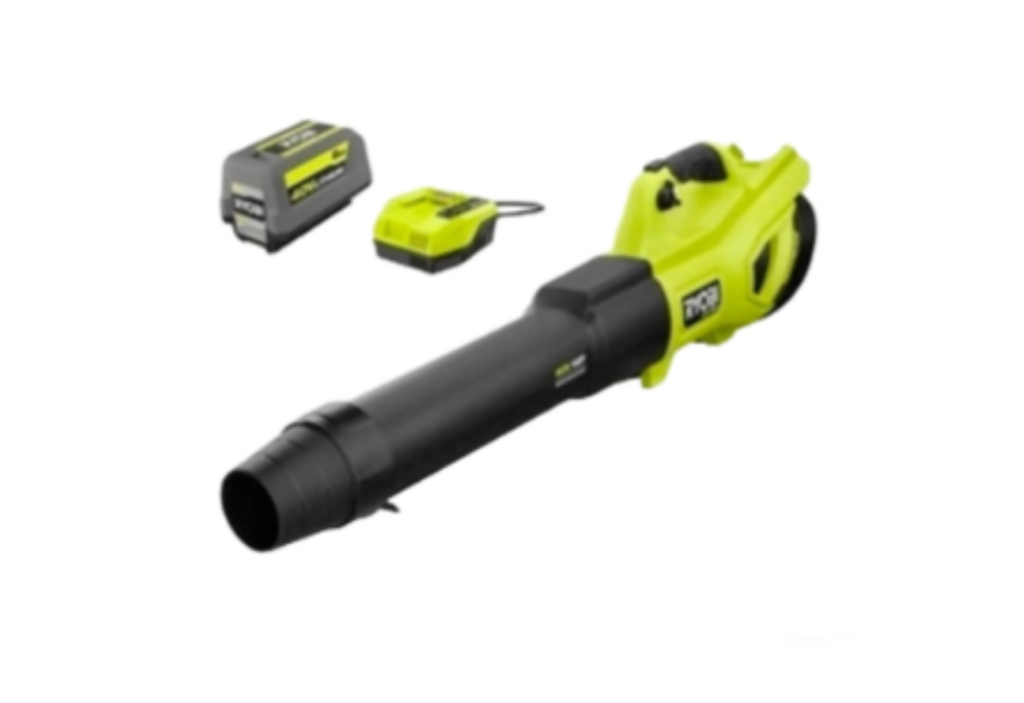
Not as powerful, a little quieter
If you need a cordless leaf blowers and can’t get the Ego LB6504 or already have some other 40V Ryobi tools If you’re in the market for a cordless leaf blowers, we recommend the Ryobi Ry404014 40V Whisper Series Leaf Blowers.
Especially if you already have other 40V Ryobi tools suggest the Ryobi Ry404014 40V Whisper Series Leaf Blower.
Although it might not be as strong as the Ego, its extended runtime and quiet operation make it good for clearing leaves in normal weather.
The design is like Ego’s, but the battery placement behind the handle can strain the wrist during use. It is also slightly heavier than the Ego.
However, the controls are similar, including the turbo button and lock-on dial. Both blowers are similarly priced, but if the Ego is available, it is the better choice. Nonetheless, we found the Ryobi enjoyable to use for leaf clearing.
Lightweight, long run time
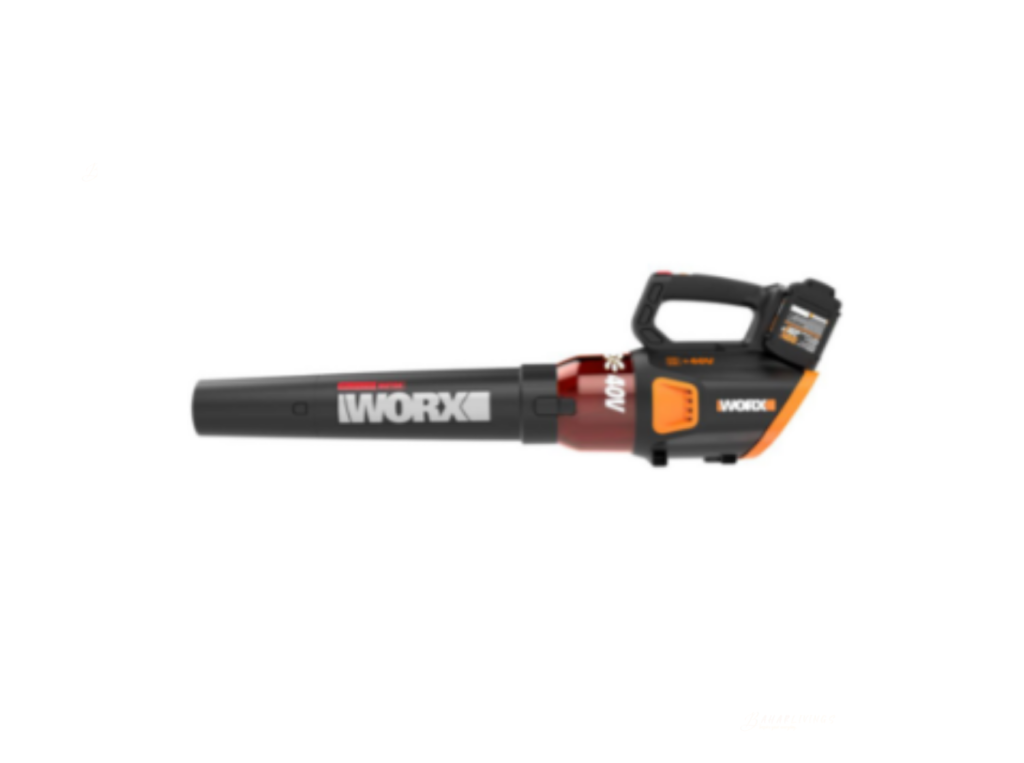
Lightweight, long run time
Another good cordless choice is the Worx WG584 40-Volt Power Share Turbine Cordless Leaf Blower.
While it is not as poor a cordless leaf blowers, the Worx WG584 40-Volt Power Share Turbine is a good option.
Although not as powerful as the Ego or as quiet as the Ryobi, it offers a runtime of almost 30 minutes, similar to the Ego. earful as the Ego or as quiet as the Ryobi, it offers a nearly 30-minute runtime, like the Ego.
The Worx uses two smaller batteries, making it lighter and more maneuverable than the others.
This makes it ideal for those concerned about handling heavier blowers.
Additionally, the batteries are compatible with Worx’s smaller DIY tools, though their lawn tool range isn’t as extensive as Ego or Ryobi.
Key Factors to Consider When Choosing a Best Leaf Blowers
If you have a small yard with only a few trees and don’t mind the physical effort, consider using a rake to collect fallen leaves.
However, if you have a larger area to cover, a leaf blowers might be a better option for you. While some people suggest leaving leaves on the ground as they provide habitat for various creatures, it is essential to be cautious of ticks.
Leaf blowers are versatile tools that work quickly and can handle tasks like cleaning gutters and removing debris from driveways.
However, it is important to check local regulations before using one, especially gas-powered models, as some areas have restrictions or bans in place.
Our Methodology for Selecting and Testing Leaf Blowers
We evaluated several models on a 2-acre property in New Hampshire, focusing on key performance aspects:
Maneuverability: We assessed each model’s ability to navigate around obstacles such as flower beds, stone walls and uneven terrain.
Ease of Control: We tested the weight, grip and overall usability, ensuring comfort and control during extended use.
Performance: Each model was tested for its effectiveness in moving leaves, handling wet debris and dealing with various outdoor conditions.
Battery Life: For cordless models, we measured runtime, recharge times and overall efficiency in maintaining consistent performance.
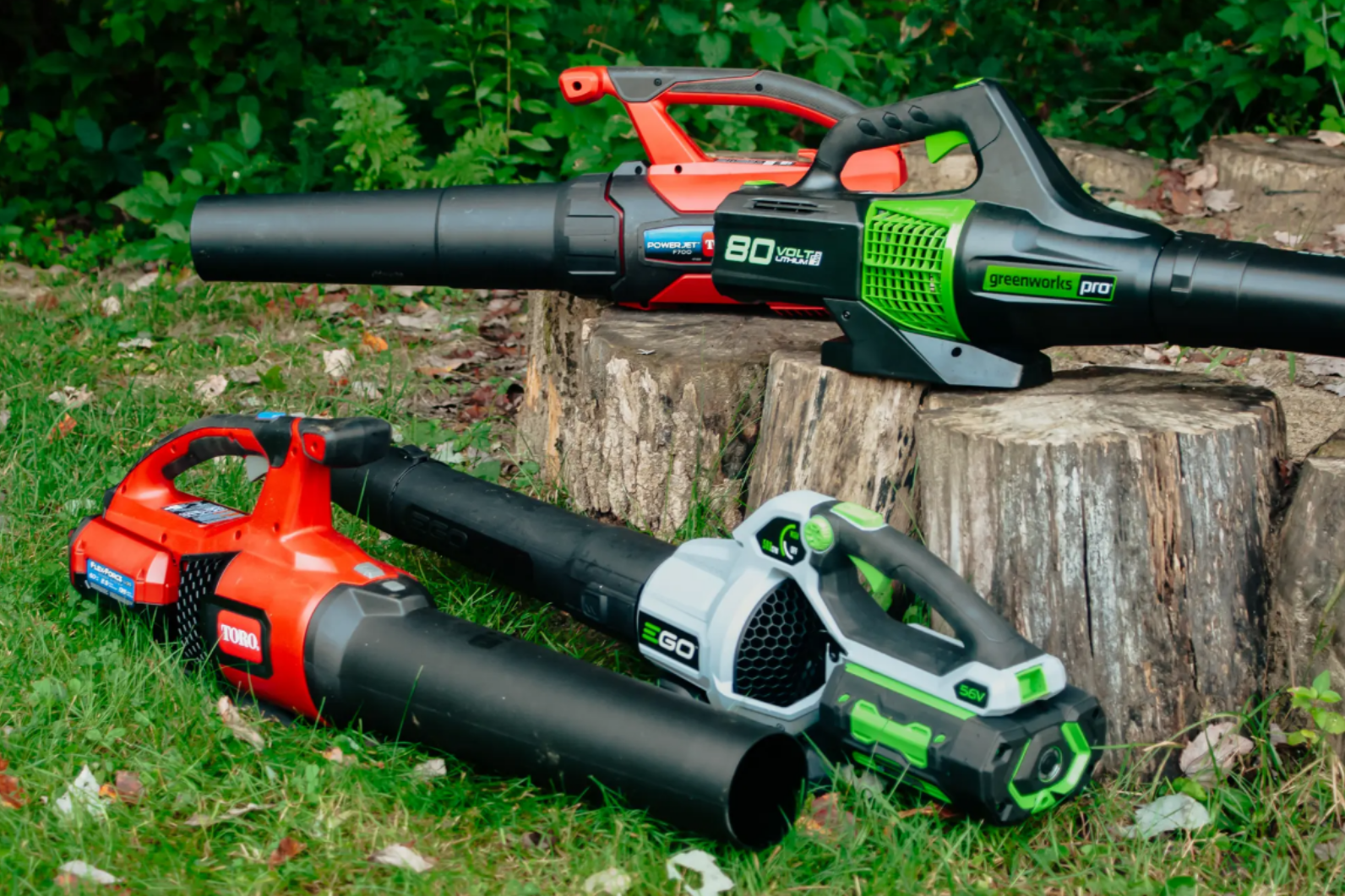
We prioritized user-friendly leaf blowers suitable for people of all abilities. We tested the blowers on a 2-acre rural property in New Hampshire, focusing on maneuverability around various obstacles like flower beds and stone walls.
We evaluated ease of control, weight, & comfort and usability, observing how effectively each blower moved leaves. We tested cordless blowers to see how long their batteries last.
Best Choice: Toro PowerJet F700: The Ultimate Leaf Blower
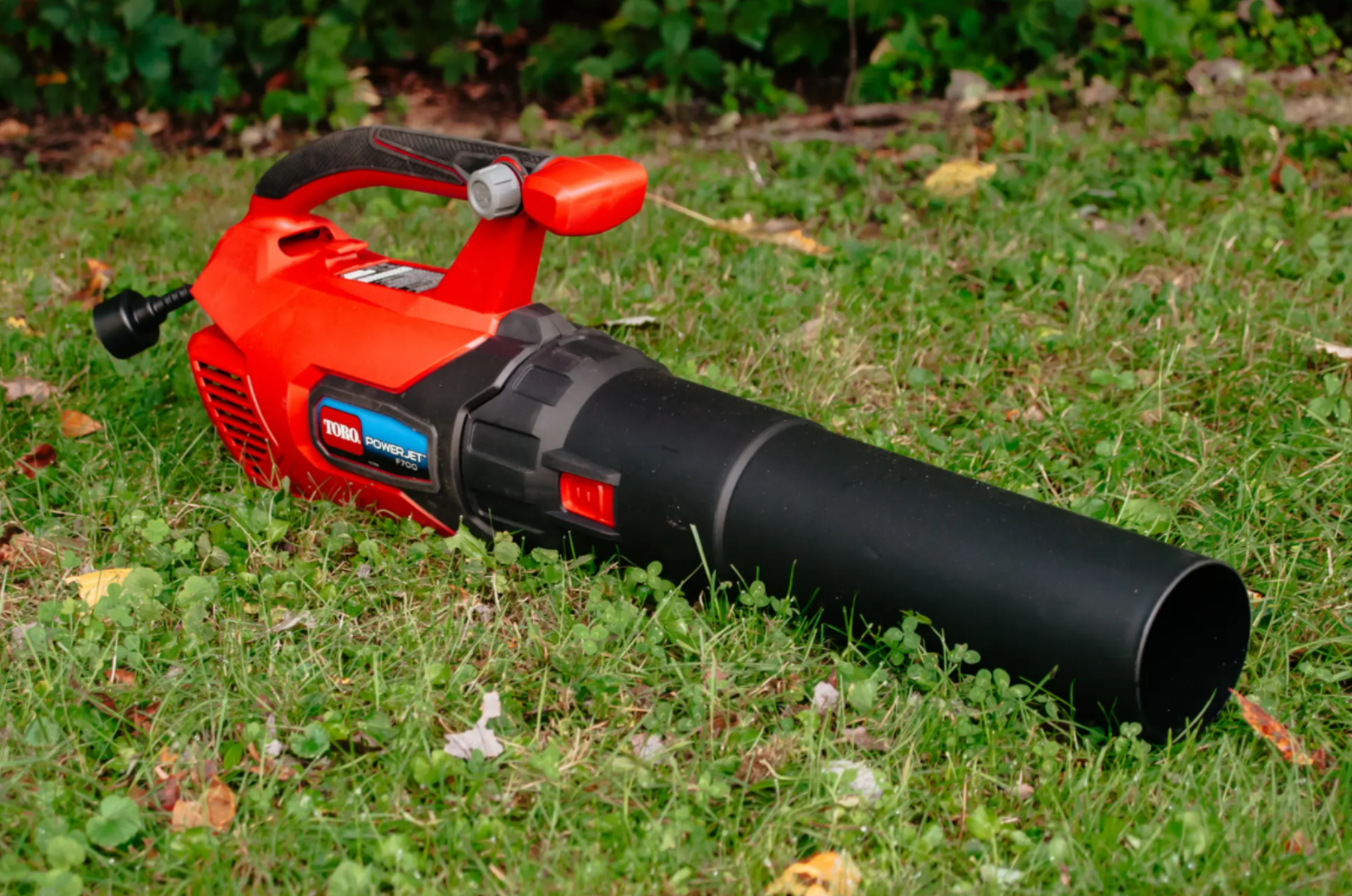
Corded leaf blowers are a popular choice due to their power, lightweight, quiet operation and low maintenance. Our top pick after extensive testing is the Toro PowerJet F700. It is highly effective at moving leaves, even under dense mats and boasts impressive airflow power.
With its variable-speed control and ergonomic design, using it is a breeze. Although competitively priced, it is essential to factor in the supplementary expense of an extension cord to enhance maneuverability.
However, it is essential to consider the additional cost of an extension cord for optimal maneuverability.
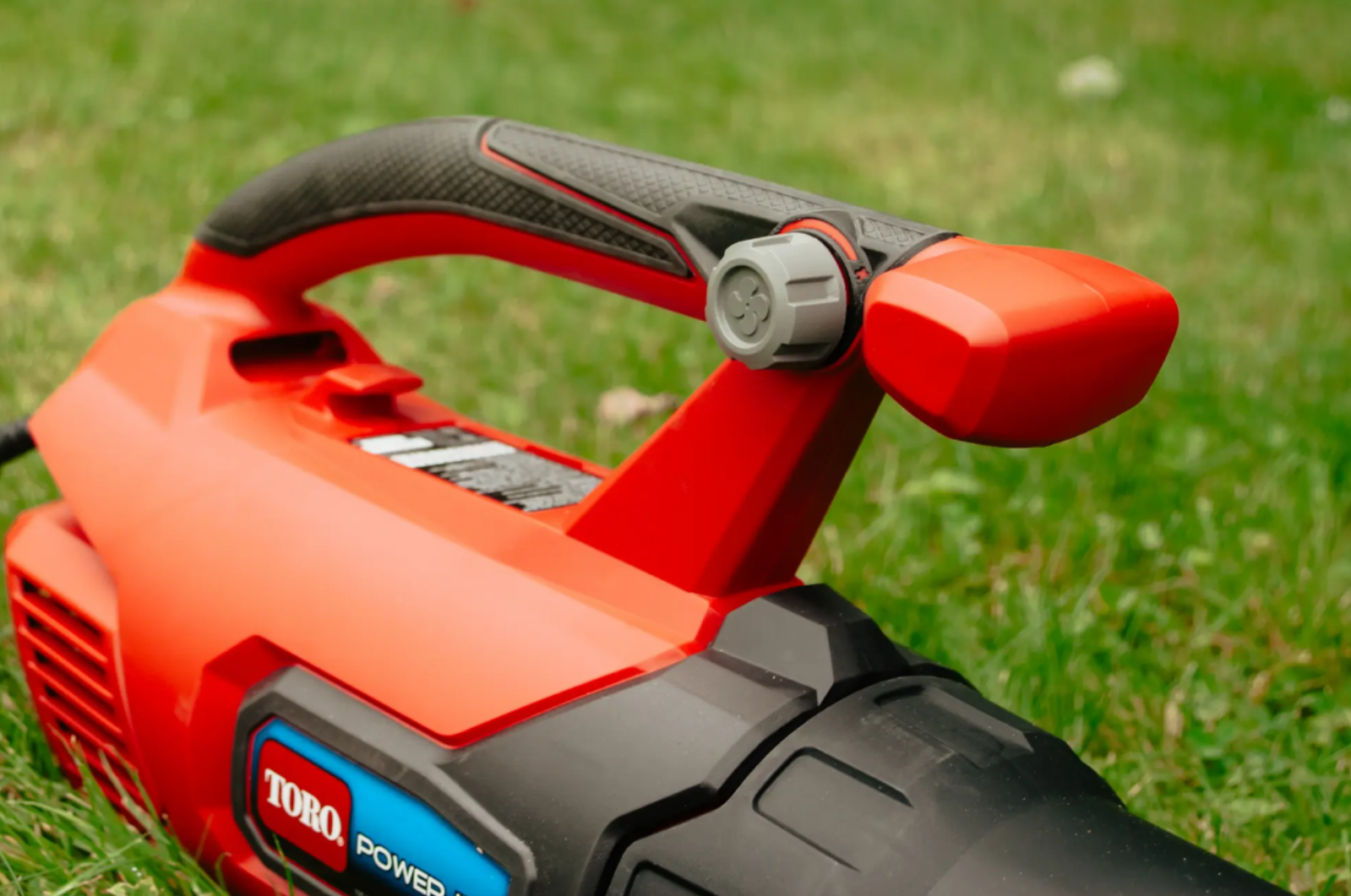
Corded leaf blowers are a top choice for many due to their power, lightweight design and ease of use. After thorough testing, our top recommendation is the Toro PowerJet F700.
This blower excels at moving leaves, even in dense piles and offers impressive airflow. With variable-speed control and ergonomic design, it is user-friendly and efficient.
While reasonably priced, remember to factor in the cost of an extension cord for maximum versatility. Overall, the Toro PowerJet F700 delivers exceptional performance and convenience for all your leaf-blowing needs.
Second Choice: Worx WG521 Turbine 800 Leaf Blower: An Excellent Alternative
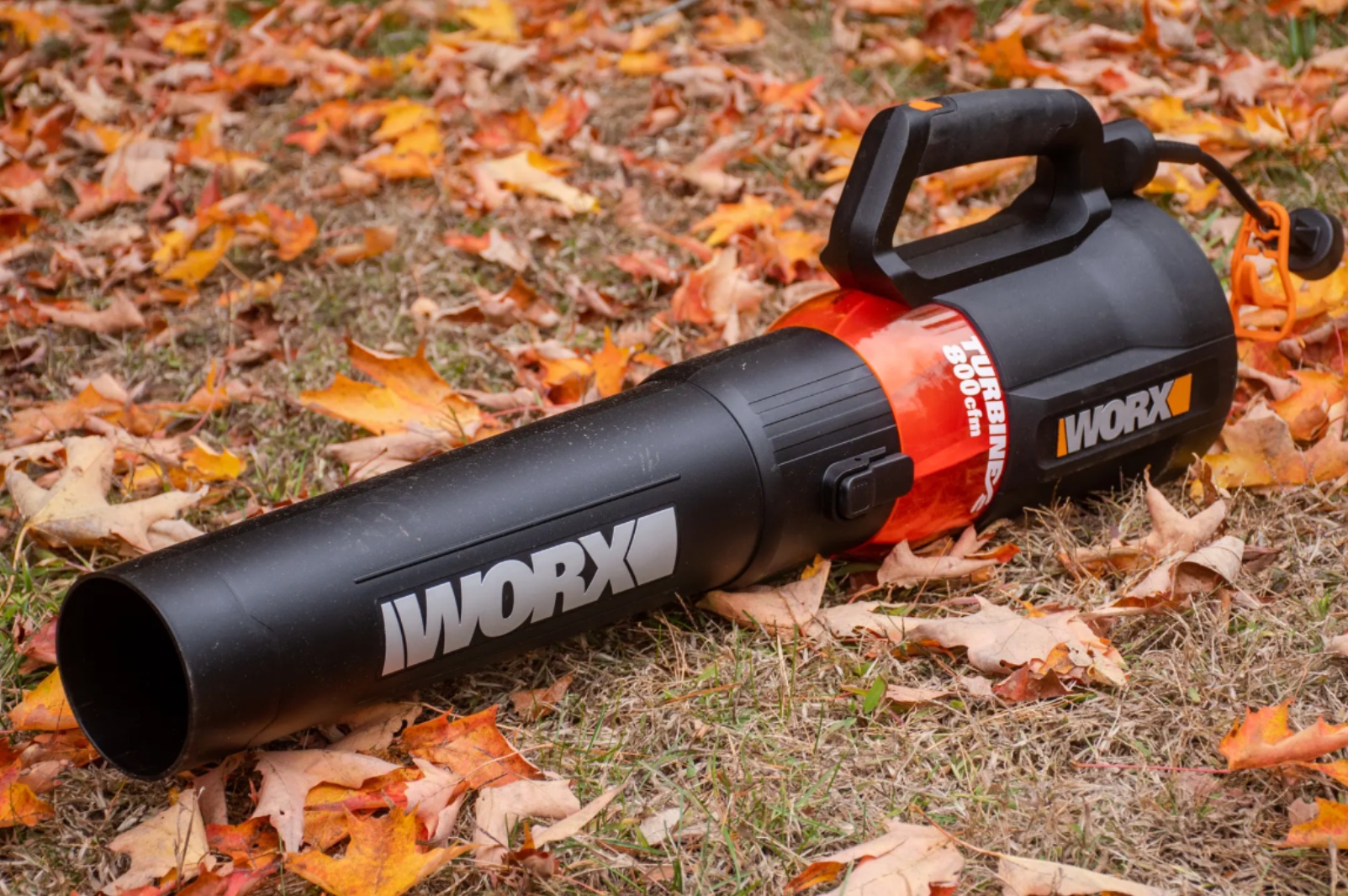
If the Toro PowerJet F700 isn’t available, we recommend considering the Worx WG521 Turbine 800 Leaf Blowers. While it offers even more power than the Toro, its handle design can be challenging to handle.
According to Worx, this blower delivers an impressive 800 CFM of air, making it a standout performer in moving leaves.
However, its small handle and limited grip options may strain the forearm, especially at higher speeds. The blower features a three-speed thumb dial for easy control.
If the Toro PowerJet F700 isn’t in stock, another excellent option is the Worx WG521 Turbine 800 Leaf Blower.
This blower boasts even greater power than the Toro, with a reported airflow of 800 CFM. While it excels at moving leaves, its handle design may pose challenges in handling.
The blower’s small handle and limited grip options could strain the forearm, particularly at higher speeds. Despite this, its three-speed thumb dial ensures easy control during operation.
Power Strip Picks: Ego LB6504 Power+ 650 CFM Blower: The Best Cordless Option
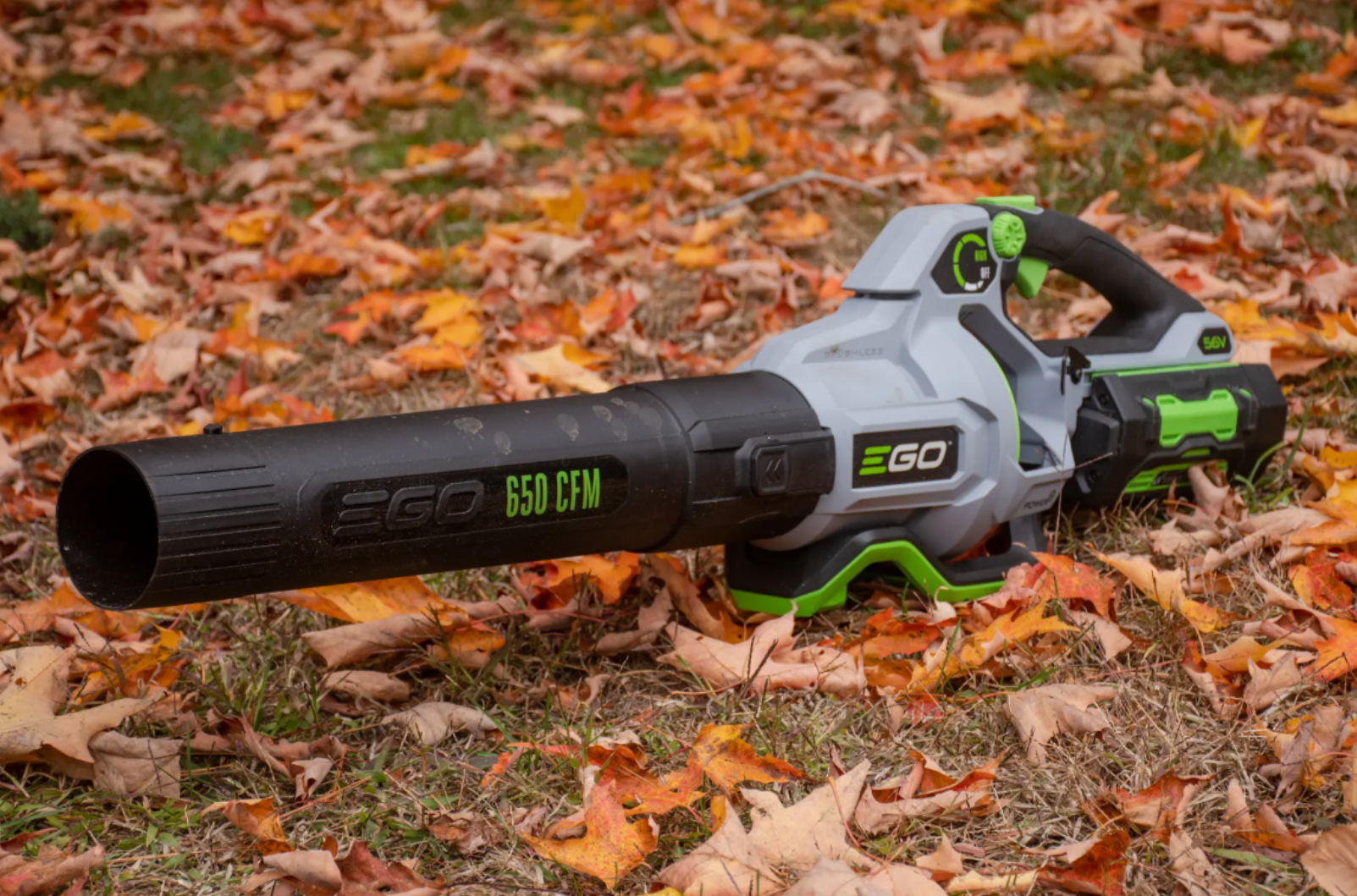
To extend beyond the reach of an extension cord, consider the Ego LB6504 Power+ 650 CFM Blower for cordless convenience.
Our tests showed that the Toro PowerJet F700 performed very well, even outperforming corded models in lifting wet leaves, thanks to its powerful airflow.
With convenient one-handed controls and a turbo button for added power, the Toro PowerJet F700 is a versatile choice.
However, weighing around 10 pounds, it is heavier than other cordless blowers in its category. Priced at approximately $275, it is on the higher end, but the included 5.0 Ah battery offers excellent power and runtime, making it a worthwhile investment.
Additionally, Ego’s battery is compatible with its other outdoor tools, making it a smart investment for those with existing or planned Ego equipment.
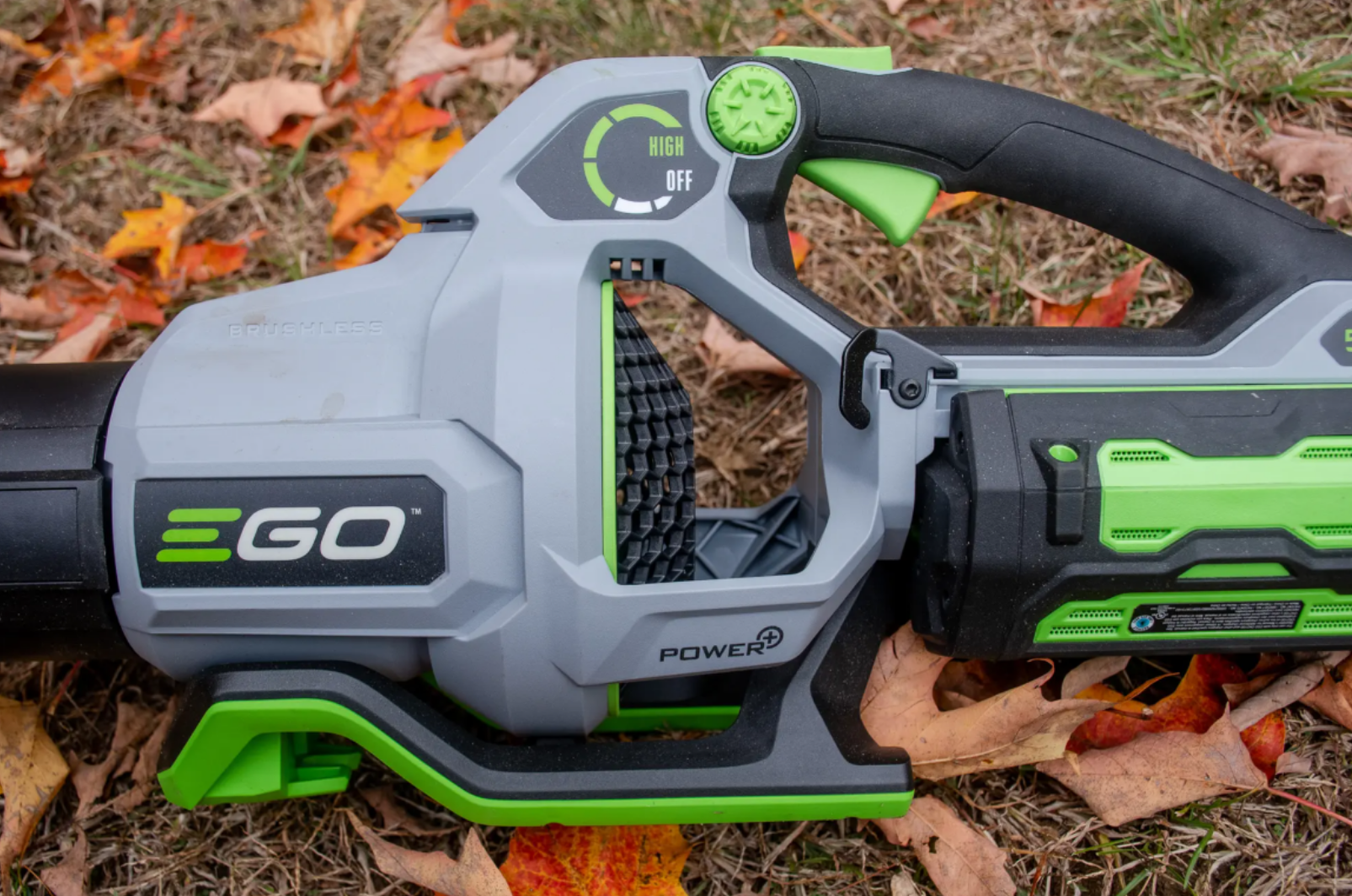
To extend beyond the reach of an extension cord, we recommend the Ego LB6504 Power+ 650 CFM Blower. Our tests revealed exceptional runtime and power, surpassing even corded models in lifting damp leaves.
Featuring intuitive one-handed controls and a turbo boost option, it offers versatility for various tasks. However, weighing approximately 10 pounds, it is heavier than many cordless blowers.
Priced around $275, it is an investment, but the included 5.0 Ah battery provides ample power and runtime.
Moreover, Ego’s battery compatibility with its other outdoor tools enhances its value, making it a wise choice for users considering or already invested in Ego equipment.
Second Choice: Ryobi RY404014 40V Whisper Series Leaf Blower: A Solid Choice
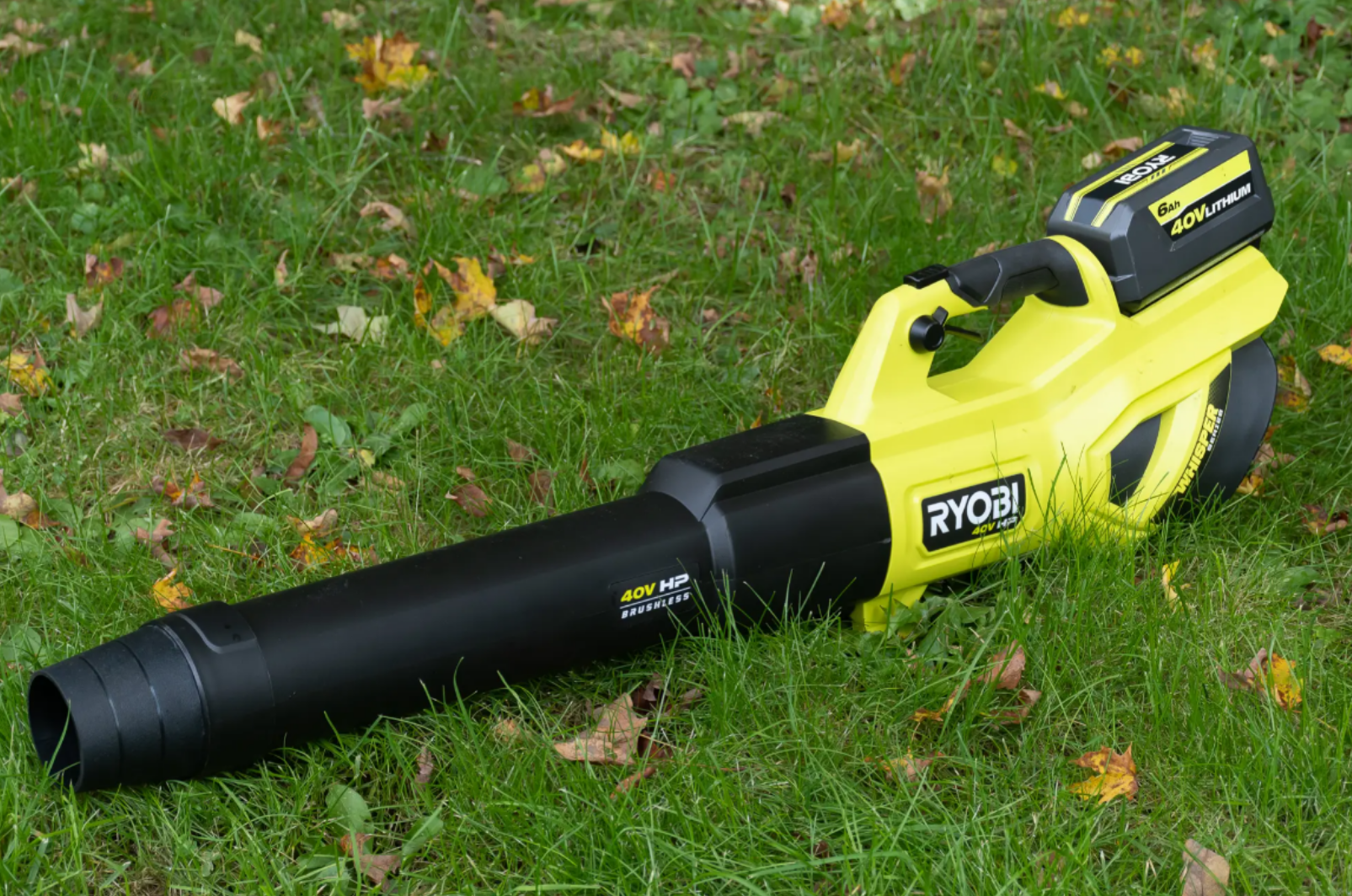
If the Ego LB6504 isn’t an option, consider the Ryobi Ry404014 40V Whisper Series Leaf Blowers. While slightly less powerful and balanced, it offers comparable runtime and is quieter. Although not as strong as the Ego, it effectively moves leaves across lawns.
The Ryobi’s rear intake and battery placement may cause minor inconveniences, but it is still a solid choice, especially if you own other Ryobi 40-volt tools. With a charge time of about 90 minutes, it is quicker than the Ego.
While Ryobi’s 40-volt lineup provides decent options at a lower price point, they may not match the power of Ego tools.
With a charge time of about 90 minutes, it is quicker than the Ego.If the Ego LB6504 isn’t available, another option is the Ryobi Ry404014 40V Whisper Series Leaf Blower.
While it may not match the power of the Ego, it offers comparable runtime and is quieter. With a charge time of about 90 minutes, it is also quicker. However, the Ryobi is rear intake and battery placement may cause minor inconveniences.
Despite being slightly less balanced and heavier, it is still a solid choice, especially if you already own other Ryobi 40-volt tools.
While Ryobi’s 40-volt lineup provides decent options at a lower price point, they may not match the power of Ego tools, but they offer good value for budget-conscious buyers.
More Options to Consider: Worx WG584 40-Volt Power Share Turbine Cordless Leaf Blower
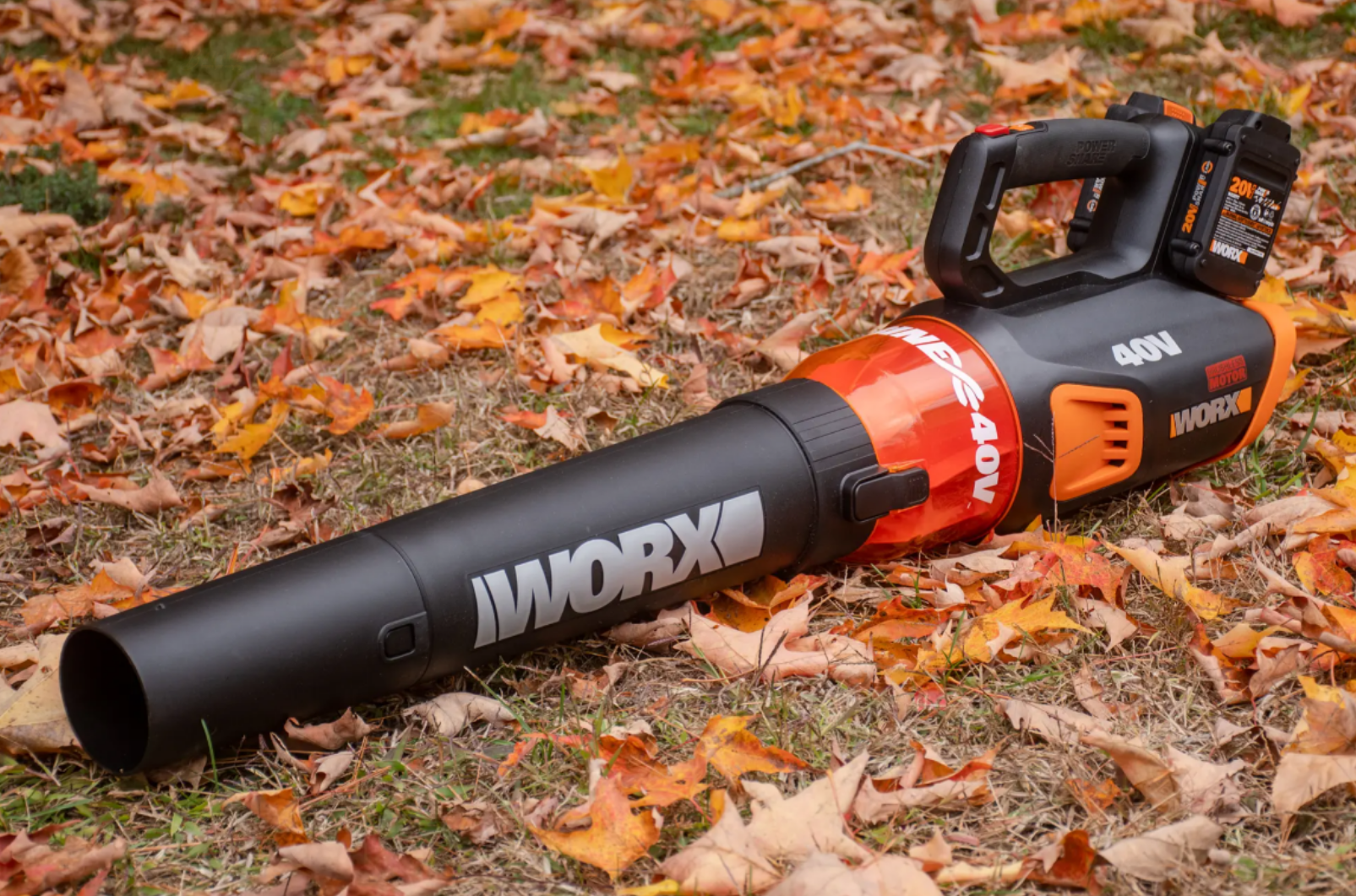
If the Second Choice: Ryobi RY404014 40V Whisper Series Leaf Blower is your choice, you will get 40 volts of power from two 20-volt batteries.
Although charging both batteries might seem inconvenient, the dual-port charger can handle them simultaneously. With a runtime of nearly 29 minutes, it outlasts our Ego pick.
Plus, thanks to its small 20-volt batteries, it is incredibly lightweight, weighing just over 7 pounds—about 3 pounds lighter than both the Ryobi and Ego blowers.
Also, the batteries work with other Worx tools, but Ryobi has more yard tools to choose from.
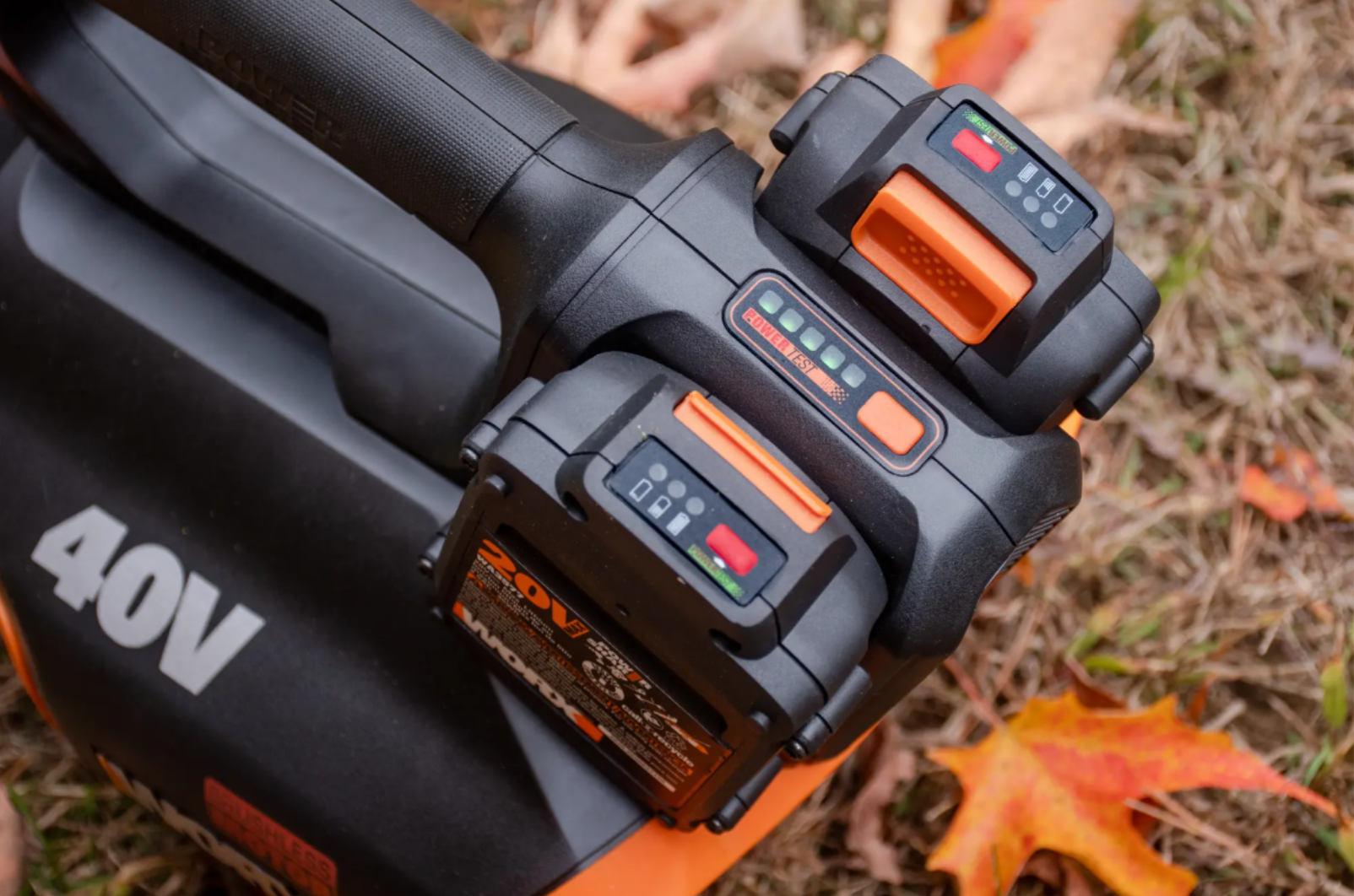
If you’re considering the Worx WG584 40-Volt Power Share Turbine Cordless Leaf Blowers, it is worth noting that its power comes from two 20-volt batteries that attach to the blower.
While charging both batteries might seem like an inconvenience, the dual-port charger can handle them simultaneously.
Although the Worx blower may not match the sheer power of the Ryobi or Ego models, it performs admirably under normal leafy conditions and boasts an impressive runtime of nearly 29 minutes—surpassing our Ego pick.
Additionally, its lightweight design, weighing just over 7 pounds, makes it incredibly easy to maneuver compared to its counterparts.
Furthermore, the batteries are compatible with other Worx power tools, providing versatility for those who already own or plan to invest in Worx products.
However, it is important to note that while Worx offers a decent selection of yard tools, Ryobi may offer a more comprehensive range of options.
For those prioritizing runtime, lightweight design and compatibility with other tools in their collection, the Worx WG584 is a compelling choice worth considering in your search for the best leaf blowers.
Comparative Analysis of Competitors’ Leaf Blowers
We examined several more blowers and ruled out others before the testing stage.
Evaluating Corded Blowers
For leaf blowers seeker, starting with the Toro PowerJet F700 corded option is a wise choice.
While the Black+Decker BV6600 High-Performance Blower/Vacuum/Mulcher and the Toro 51619 Ultra Blower/Vac offer mulching capabilities, they didn’t match the leaf-blowing performance of the Toro F700 or the Worx WG521 in our tests.
Unlike the Toro F700, the Stihl BGE 61 is pricier and doesn’t seem to match their air-moving power.
Evaluating Cordless Blowers
Before discussing the cordless models, we set aside, it is important to note that if you already have batteries from a certain brand’s system, the best cordless leaf blowers for you might be one that works with those batteries.
While there are differences between models, our top picks offer the best combination of performance, features and value. Yet, there are other models from known brands like DeWalt, Milwaukee, Greenworks and Toro that are dependable.
Cordless leaf blowers are often available for purchase without batteries or chargers, leading to significant cost savings.
Tested in 2023, the Milwaukee 2824 Dual Battery Leaf Blowers requires two batteries, adding weight and making it heavier than our Ego pick.
Despite offering about 19 minutes of runtime on high, its lack of a turbo button means it operates at maximum power throughout, unlike the Ego.
Despite comparable leaf-blowing abilities, the Milwaukee option is significantly pricier, making it a substantial investment.
Analyzing Different Types of Cordless Blowers
The Echo DPB-2500 eForce 56V Leaf Blower had a short runtime of about 16 minutes on high in our tests and featured air intakes on each side, which could be bothersome during use.
The Ryobi RY404100 40V Cordless Jet Fan Blower boasts impressive specifications with a CFM of 730 in turbo mode. However, each battery lasts about 15 to 20 minutes on high, comparable to our Ego pick but with the added hassle of managing two batteries.
We also tested the Ego Power+ LB7654, which offers higher CFM than our pick but only in turbo mode. Its regular power dial provides the same CFM scale as our pick, making them essentially identical during regular use.
Priced higher than our pick, we don’t believe the slight performance boost justifies the added cost.
The Greenworks Pro 60V Brushless Leaf Blower has similar leaf-moving power and runtime as our top pick Ego, with a shorter charge time of under an hour.
Yet, it is bulkier and trickier to handle, though ideal if you already possess Greenworks batteries and chargers.
The Milwaukee 2724-21 M18 Fuel Cordless Handheld Blower offers less runtime and power than the Ego, emptying out a battery in just under 15 minutes. Despite its light and maneuverable design, its high-pitched noise is not ideal for neighbors.
The Ryobi 404100 40V Jet Fan Cordless Leaf Blower is more potent than our current Ryobi pick and rivals the Ego but has a very short runtime of 13 minutes.
The Worx WG585 Nitro 40V PowerShare is lightweight and easy to handle but lacks the leaf-moving ability of others.
Evaluating of Gas-Powered Blowers
In the past, we used to recommend gas blowers, such as the Stihl BR 350. However, with the ongoing advancements in cordless technology, we’ve reconsidered our stance.
Gas models come with drawbacks—they’re noisy, emit pollutants and need gas, oil and regular maintenance. Their main advantage used to be their longer running time.
But nowadays, we’ve found that a quality gas blower, like the Stihl BR 350, costs about the same as our cordless picks, plus the extra expense of an additional battery.
Cordless blowers enable battery swapping, reducing downtime for recharging, significantly altering the runtime equation.
Final Recommendations
Best Corded Blower: Toro PowerJet F700 for its combination of power, ergonomic design and affordability.
Best Cordless Blower: Ego LB6504 Power+ 650 CFM for its portability and impressive runtime.
Quieter Option: Ryobi RY404014 40V Whisper Series for noise-sensitive areas.
Lightweight Option: Worx WG584 for easy handling and moderate power needs.
Explore the Best Leaf Blowers for Your Needs
Modern leaf blowers offer a variety of options to suit different yard sizes, power requirements and budgets. By understanding the strengths and limitations of each model, you can make an informed decision and enjoy effortless yard maintenance all year round.
Frequently Asked Questions (FAQs) and Answers
What makes a leaf blower stronger?
The power of a leaf blower is determined by its engine power (measured in cubic centimeters or CC), air speed (mph) and air volume (CFM). Higher CC, faster speeds and stronger airflow make a blower more powerful.
How do leaf blowers affect the environment?
Gas-powered leaf blowers contribute to air pollution and noise, while electric blowers are more eco-friendly, emitting zero emissions and being quieter. Choosing an electric or battery-powered model reduces environmental impact.
What matters most in a leaf blower?
Key factors to consider include engine power, airflow (CFM), air speed (mph), weight and noise level. A balance between power and ease of use makes a leaf blower effective.
How fast can a leaf blower go?
Leaf blowers can reach speeds of up to 200 mph or more, depending on the model. Faster speeds are ideal for blowing leaves and debris efficiently.
Do leaf blowers work on wet leaves?
Yes, leaf blowers can move wet leaves, but they may be less effective due to the added weight and stickiness. Using a higher-powered model can help tackle damp conditions.
How long should you run the blower?
Most leaf blowers can be used for up to 30-60 minutes at a time. It is essential to allow the blower to cool down during breaks to avoid overheating.
How do I increase my blower speed?
To increase blower speed, check if your model has variable speed settings. For gas models, increasing throttle can boost speed, while electric models may require switching to higher-power settings.
How many hours does a leaf blower last?
The lifespan of a leaf blower varies, but most models last between 200-400 hours of use with proper maintenance. Regular cleaning and storage can extend the life of your blower.
Do leaf blowers overheat?
Yes, leaf blowers can overheat if run for extended periods without breaks. Ensure proper ventilation, clean the air filter and take periodic breaks to avoid overheating.


Thanks for sharing. I read many of your blog posts, cool, your blog is very good.
Thank you for your sharing. I am worried that I lack creative ideas. It is your article that makes me full of hope. Thank you. But, I have a question, can you help me?
Thanks for sharing. I read many of your blog posts, cool, your blog is very good.
Thanks for sharing. I read many of your blog posts, cool, your blog is very good.
Thank you for your sharing. I am worried that I lack creative ideas. It is your article that makes me full of hope. Thank you. But, I have a question, can you help me?
Your point of view caught my eye and was very interesting. Thanks. I have a question for you.
Your point of view caught my eye and was very interesting. Thanks. I have a question for you.